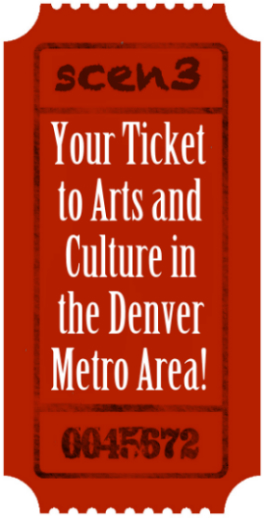Mad Madrigals with Seicento Baroque – March 2018
Preview article by Betsy Schwarm
Boulder-based Seicento Baroque specializes in choral music of the 16th century. Last fall, that focus was expressed in a 500th anniversary commemoration of the Reformation. This spring, the ensemble takes up the secular side of the equation: similarly intricate layers of voices, but significantly higher spirits.
The program, to be performed March 16-18, is called “Mad Madrigals.” That’s “mad” as in madness, not anger. One might not normally think of madrigals as being particular mad; here, after all, is an art form often expressive of love amongst fields of flowers with much fa-la-la-ing along the way. However, there’s also the madness that comes with spring passions. As Seicento’s Associate Artistic Director Amanda Balestrieri observes, “it’s a madrigal program, but not what you’d expect if you only know Morley or Monteverdi.” Both of those superstar madrigal composers are on the program, but Seicento will also range further afield, with music from four countries and everything from drinking songs to animal sounds to an Italian children’s alphabet song.
Most of the various selections are quite short individually, but are arranged in contrasting pairs so one can observe how one composer might influence another. So along with Englishman Thomas Morley’s “Sing we and chant it,” Seicento also offers Morley’s Italian contemporary Giovanni Gastoldi’s “A lieta vita;” that the two madrigals have much in common will be readily noticed. Gastoldi’s dance-like songs were international best-sellers. Once they reached Morley’s hands, they not only provided inspiration but also specific rhythms and melodic passages that Morley made his own.
Other selections from the program are comparably matched, if not from the reuse of melodic material, then from similar imagery or techniques. Alonso Lobo’s drinking song La tricotea alternates between languid moods and rowdy celebration; one might imagine that the former represents empty glasses and the latter newly filled ones. By contrast, Roland di Lassus’ “Matona, mia cara” pokes fun at a German soldier in Italy, mocking his language errors as he woes a local lady. “Matona” is the closest he can come to “Madonna.” The entire concert will close on a light-hearted note, with Benedetto Croce’s Canzonetta da bambini, a vision of children on their way to school reflecting upon their teachers’ quirks and chanting the Italian alphabet. Those who might be concerned of missing the joke when most of the texts are in Italian, with a bit French and Spanish, and only a dash of English, need not worry: texts and translations (by Balestrieri) will be in the program.
A significant portion of Seicento’s program is given to Adriano Banchieri, selections from whose Il Festino make up the bulk of the second half. Banchieri spent much of his career working with sacred music, though Il Festino represents a very different side of his oeuvre. Here, the music captures the essence of the commedia dell’arte tradition, with anything from lovers’ sighs to cat’s meows. Capturing those changing moods and communicating them to listeners requires close attention from the performers. Balestrieri, who is not only Seicento’s Associate Artistic Director but also one of its singers and herself a voice teacher, notes that one must take care to “put a sigh in your voice” – or a laugh, and listeners can keep an ear out for those effects.
It’s a somewhat earlier mix of music than Seicento usually performs. Founder and Artistic Director Emerita Evanne Browne, who will be back in town for the program, says “It will be good for the choir and our listeners to discover how our main repertoire [dating from several decades later than the material here] was influenced by what came before.” She also notes that the ensemble will focus, as usual, on “historically informed performance. In this case, that will include careful use of word painting – such as Balestrieri’s “sigh in the voice” – as well as the flexible flow of music across bar lines and certain elements of ornamentation. There are the notes on the page, and then there is what one does with those notes: that’s an important part of the artistry for Renaissance music.
Music of the 16th century is often a cappella, with unaccompanied voices, though Seicento’s “Mad Madrigals” program makes room for instruments, as well. Several of the featured composers, notably Barbara Strozzi, tended to include instrumental accompaniment, for which Seicento will be joined by performers on theorbo, baroque cello, and harpsichord. There will also be some solely instrumental passages: that’s how evidence suggests the music would have been performed back in the day, when madrigals and instrumental dances were an important part of music making, even in the domestic circles for which much of the program material was originally intended.
The programs bring attention to a lighter side of the Renaissance. Whether one is hoping to explore music not often encountered, or to celebrate the approach of spring – or even to indulge in good cheer in the face of what may, by then, prove to be a late winter storm, Seicento Baroque may well have exactly what one needs. Certainly, Browne observes of the rehearsal process, “the choir’s having a tremendous time. We think listeners will, too.”
There will be three performances of “Mad Madrigals.” The first is set for Friday, March 16 at 730pm at Denver’s Montview Boulevard Presbyterian Church, with repeats Saturday the 17th (also at 730pm) at Boulder’s First United Methodist Church, and a 3pm matinee Sunday the 18th at Longmont’s First Evangelical Lutheran Church. The Boulder performance includes a pre-concert talk by Balestrieri and Browne, as well as additional pre-concert entertainment. Further information is available at:
https://www.seicentobaroque.org/currentseason/.













